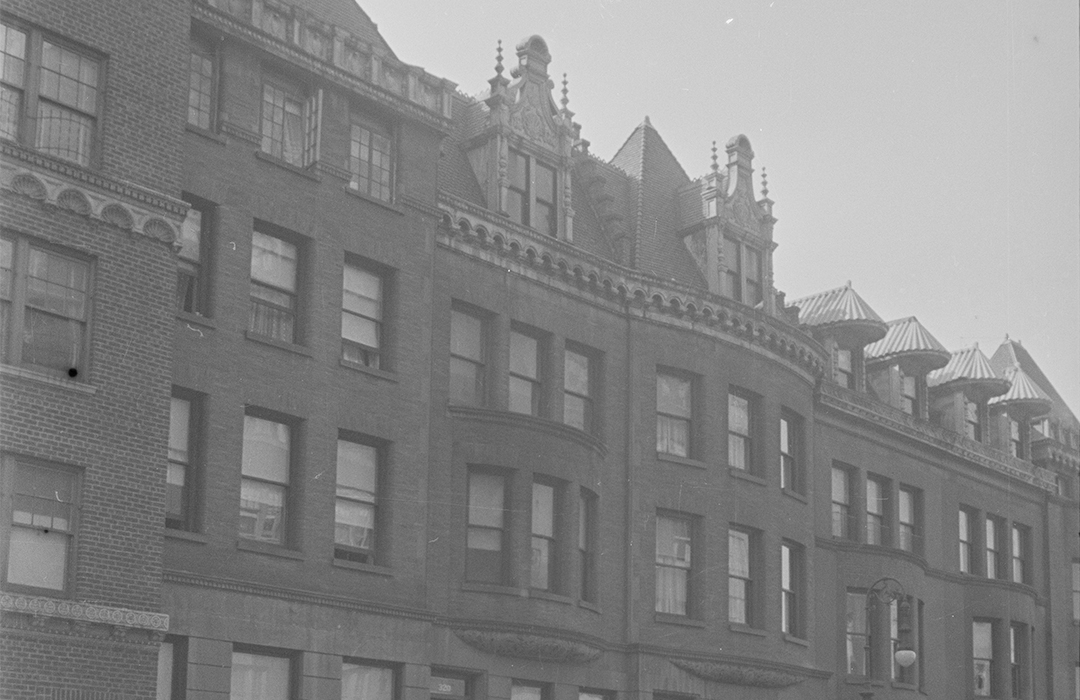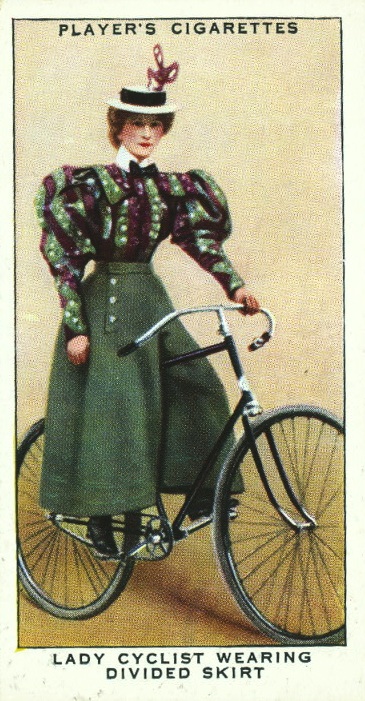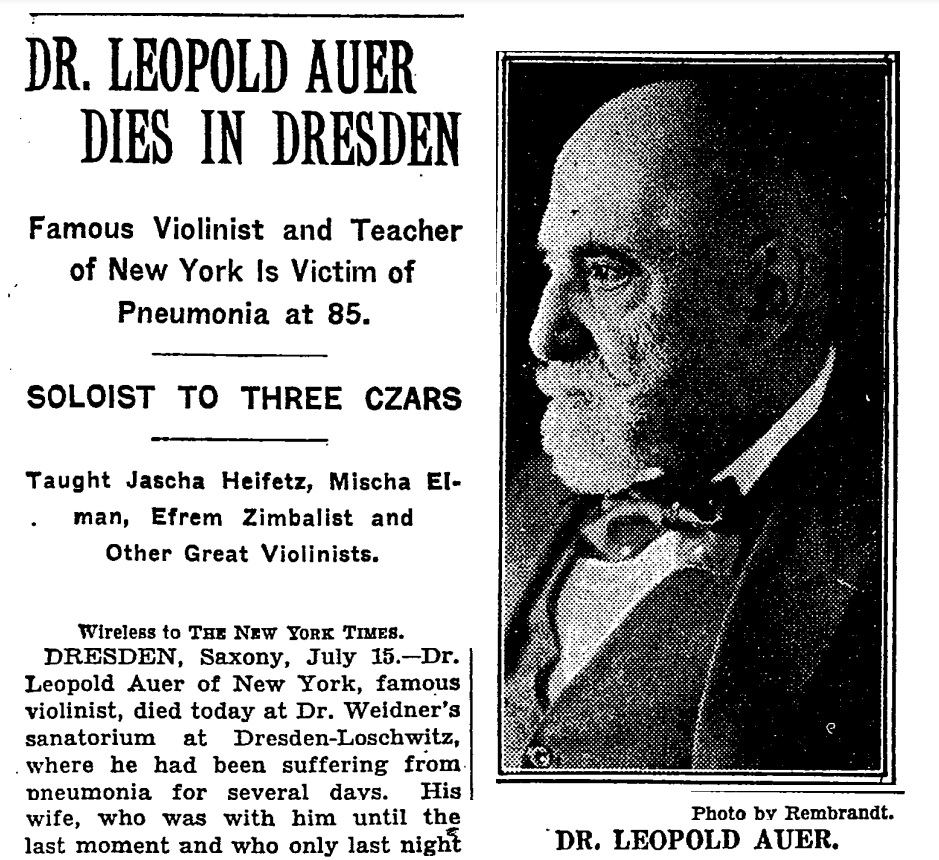
320 West 77th Street
by Megan Fitzpatrick
This heavily altered rowhouse from 1891-92 has an interesting background of a couple of eclectic residents and was potentially a place where neighbors could participate in a seance.
Built as one of a row of 13 houses by American architect Charles T. Mott, all rowhouses featured rusticated brownstone basements and brick upper floors. Mott was active in constructing rowhouses on the Upper West Side from the late 1880s, employing an eclectic mixture of contemporary style designs, most prominently Renaissance Revival.
Originally constructed in a Renaissance Revival style, 320 West 77th Street featured a straight stoop entrance, a shallow swell front of Roman brick framed by quoins, and rope twist moldings at the second story, supported on a carved foliate corbel. It would have closely resembled 322 next door, although it also suffered heavy alterations to its facade. Both rowhouses once had embellished dormer windows, similar to a Dutch gable in shape, above an ornate cornice at the roof line.
William Hopping Barron and his family were the first residents of this building. William and Elizabeth H. Barron had four children, James S, Elizabeth F, William H. Jr, and Madeleine. Barron was a hardware merchant and a member of the Merchants’ Association of New York (New York Times, 7/31/1897).
The family were well known in New York high society, with Elizabeth hosting several lunches and bridge sessions in her house on 77th Street. The family frequently visited their seasonal residence in Belmar, New Jersey, enjoying cycling among other outdoor activities. The New York Times wrote that the Barron family had returned from N. J. and “have opened their townhouse” on West 77th, adding that Mrs. Barron “looks well in her wheeling costume” (New York Times, 10/6/1895).
Wheeling or cycling, became very popular amongst the women of New York in the 1890s, mainly due to the improvements in bicycles making them lighter, easier to power, and more comfortable. ‘Wheeling’ catapulted into the mainstream and women began cycling in large numbers, citing an interest in the health benefits but also enabling women to have greater freedom in their lives. It was critically important what one wore while wheeling, women’s wheeling costumes often involved a divided skirt, possibly over a pair of trousers to which the skirt was pinned, or a pair of bloomers. We can imagine this was similar to what Mrs. Barron would have been wearing.
Both rowhouses once had embellished dormer windows, similar to a dutch gable in shape, above an ornate cornice at the roof line.
The family were congregants of the Church of the Divine Paternity on Central Park West, one of the most affluent churches in the city. When the youngest daughter Madeleine married George Connolly in November 1916, the Universalist pastor Dr. Frank Oliver Hall, performed the small ceremony at a temporary altar at 320 West 77th Street. Witnessed by only a small number of relatives and intimate friends, Madeleine wore white satin embellished with seed pearls and trimmed with silver lace and a veil of tulle, arranged to resemble a Russian headdress, almost the length of the train (New York Herald, 11/12/1916).
The Barron’s sold the property in April 1920 and soon after acclaimed violinist Leopold Auer moved in. Born in Hungary in 1845, he studied the violin in his youth and soon became one of the outstanding violinists of his day. He was appointed professor at the Imperial Conservatory in St. Petersburg, Russia, and was the soloist in the Russian court of three Czars, Alexander II, III, and Nicholas II. He taught many pupils at the Conservancy, including Jascha Heifetz, Efram Zimbalist, Mischa Elman, and many others who would find success all around the world. During these years, he was also the intimate associate of many celebrated composers and writers such as Tchaikovsky (who wrote two pieces dedicated to Auer, but later rescinded the honor). Auer had a complicated and tumultuous relationship with his students and associates but is lauded as one of the most influential violinists of the era.
In early 1918, Auer came to New York, following the footsteps of many of his students and escaping from persecution in Russia. He began teaching some of his former students again and gave his first U.S. recital in 1924 in Carnegie Hall. His former students Heifetz and Zimbalist honored him for his 80th birthday in a concert held at Carnegie Hall once again. Auer died five years later in 1930, of pneumonia in Dresden Germany, but he was living at 325 West End Avenue at the time of his death (New York Times, 7/16/1930).
Dr. Conrad Hauser, described as a self-professed “psychic scientist”, opened his Spiritualist Church of Psychic Sciences at 320 West 77th Street around 1930. Hauser was one of few mediums in the city, performing seances and other spiritualist activities in his church, connecting the living with the dead. According to the Times Union Hauser warned against the execution of one of the Diamond Boys, a gang who murdered bank workers during a heist, because his spirit could haunt New York and seek their revenge (Times Union 8/18/1925).
In 1946, the rowhouse was sold to Emory and Frances Dutch and it was converted from a single-family dwelling to five apartment units, with the Dutch family living on the first floor (The New York Sun, 5/1/1946).
Dr. Conrad Hauser, described as a self-professed “psychic scientist”, opened his Spiritualist Church of Psychic Sciences at 320 West 77th Street
Prior to the conversion, in 1942, the facade of 320 West 77th Street was stripped and resurfaced with brownstone stucco. The stoop and ornate cornice were completely removed and a new entrance was created in the basement. Later in its life, the denticulated cornice was removed also. Almost every unique aspect of this dwelling’s facade had been stripped away over the course of its long life. Hopefully, some well-needed restoration work will recover some of its 19th-century delights.
Megan Fitzpatrick is the Preservation and Research Director at LANDMARK WEST!




